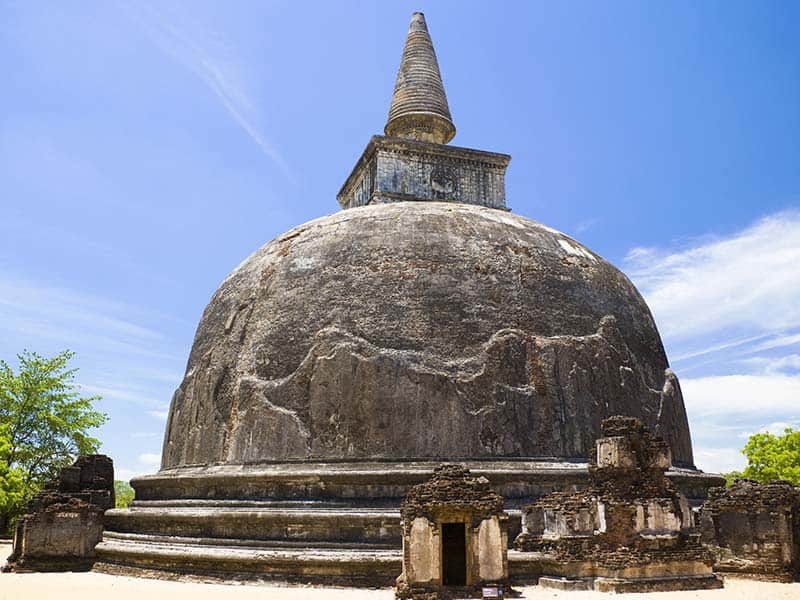Polonnaruwa functioned as the capital of Sri Lanka during the medieval era, and it is famous for its utter lack of massive stupas in the manner of the preceding Anuradhapura period; perhaps during the time of expanding foreign trade under the Abbasid Arab Empire and the Sri Vijayans of Indonesia, more money could be spent on economic activities rather than wasting them on yet another series of monuments. One of the most revered of the Polonnaruwa stupas is this one, Kiri Vihara, commissioned by one of Parakramabahu I’s queens, supposedly named Subadhra. In reality, it is less than half the height of the over fifty-meter-tall Rankoth Vehera, a construction sponsored slightly later by King Nissankamalla.
However, Kiri Vihara is still the best-preserved stupa. Originally it was called Rupavathi Chaitya.
It is part of the great ensemble belonging to the Alahana complex, a pirivena or a learning institute for the monks which also included a hospital, complete with surgical instruments.
It was constructed during the 11th Century AD and as per the name of the stupa, the whitewashed plaster still remains in a few places although much of it is still composed of bare stone. In its design, Kiri Vihara is quite simple, with no incredibly exuberant details in any of the background features.
For one thing, there are no discernible moonstones, guardian stones, or the customary images of gods, demons, and the like, or even a vatadage around it. During this era, most of the vatadage and other protective buildings were built around the very smallest stupas, with more emphasis going towards the protective structure rather than towards the centerpiece which was a small structure of bricks, a rather undignified shade compared to the colossi of Anuradhapura or even the other great stupas of their own time. There are a few of these little mounds in the hinterland of the main stupa of Kiri Vihara, probably for enshrining the body parts of the other monks. As funerary mounds, they stand in the middle of little raised courtyards in the middle of brick platforms and as a whole, they are part of the famous Alahana Pirivena complex. In the shadow of the large stupa is a selection of small vahalkada, an architectural feature peculiar to Sri Lanka.
Vahalkadas are small decorative platforms of varying shapes and sizes that were probably altars for offerings of flowers and incense.
According to some, they are image-houses for little statues of the Buddha or the gods.
Written by Vasika Udurawane for Travel Lanka Compass



0 Comment